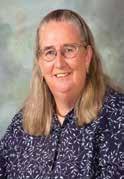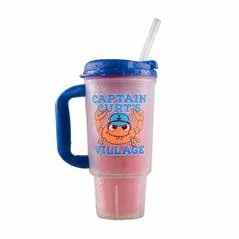





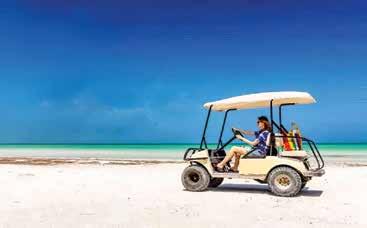








Commissioner Smith tells residents several projects are funded, others need support
By ChrisAnn Allen
It’s budget season for the Sarasota County Board of Commissioners. With a projected $2.5 billion total budget for 2026, property taxes equate to 58% of the general fund revenue at $296 million, a 5.6% increase over 2025. And residents and business owners are hopeful Siesta Key – and its value within the county – will be considered as part of the spending.
District 2 Commissioner Mark Smith, an architect who lives on the key and whose district includes the northern portion, spoke on Aug. 14 at a meeting of the Siesta

Durda)
Key Association (SKA), a neighborhood advocacy organization which meets monthly to discuss issues affecting the key. Smith updated the group on a list of current projects and items added to the 2026 budget, which is being workshopped before the fiscal year begins Oct. 1.
Catherine Luckner, SKA president, introduced Smith to the group, stating, “We need you,” regarding Smith’s consistent efforts toward enhancement of the key since he was elected in November 2022. “You understand what goes on in terms of building, development, living

Audubon credits conservation while urging
iesta Key’s beaches and shoreline are home to a great variety of shorebirds who live amongst us. Shorebirds, as their name implies, live along the shoreline. To find their food, they dive into the water for fish to eat. Shorebird species found on and near Siesta Key include the least tern, snowy plover, American oystercatcher, black skimmer, and Wilson’s plovers. Least terns, black skimmers and snowy plovers all nest along Florida’s coasts and in
By Jane Bartnett
the Sarasota area. Piping plovers also migrate to the Sarasota area during the fall and winter months but return to northern beaches for their breeding season.
One year after the hurricanes that impacted our coastline, scientists at Audubon Florida report that they were generally pleased by what they discovered during the past year as the Siesta Key and Sarasota region recovered. There was some good news to report.

“This year, Black Skimmers and Least Terns have nested at Lido Key Beach, just north of Siesta, with great success,” said Evan Powers, Sarasota stewardship coordinator, Audubon Florida. The last year, he said, has been one of the most productive for the endangered black skimmer. “On the northeast end of Siesta Key, there were a lot of junior black skimmers.” Kara Durda, shorebird program manager of the National Audubon Society, called it “a pretty great



Being a local comes with its own set of privileges. While “season” brings a vibrant mix of visitors from across the country and around the globe, locals—like Jerry and Jill, the owners of Abel’s Ice Cream—quietly look forward to the calmer months. It’s the time of year when favorite restaurants have open tables, beach parking is plentiful, and the roads flow freely once again. This quieter pace is the perfect backdrop for savoring time with family and friends, and Abel’s Ice Cream has become a favorite gathering spot. Here, laughter is shared over creamy scoops and joyful conversations.
Two flavors are winning hearts right now: Raspberry Truffle (a heavenly blend of raspberry ice cream, a ribbon of raspberry, and dark chocolate raspberry cups) and Special Praline (Praline pecans & caramel swirled together in smooth vanilla ice cream.)
In the off-season, life moves a little slower. And at Abel’s, that’s just how locals like it so stop in today and discover your favorite. Abel’s Ice Cream is located at 1886 Stickney Point Road, Sarasota, in the South Bridge Plaza. Open Sunday through Thursday from Noon – 9:30 p.m. Friday and Saturday from Noon – 10 p.m. Learn more online at www.abelsicecream.com or connect with them on Facebook and Instagram.
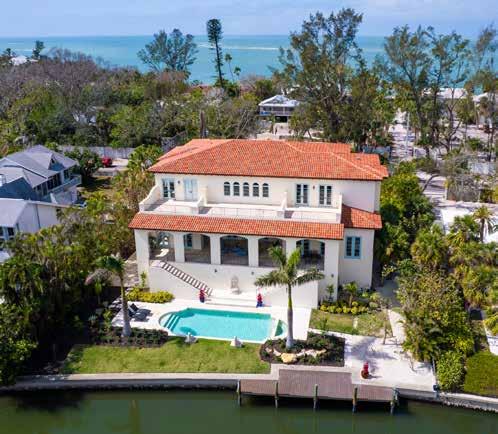

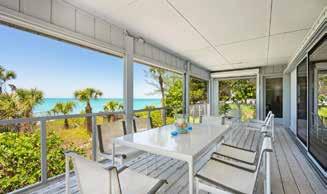





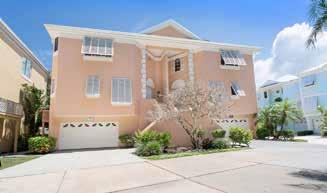
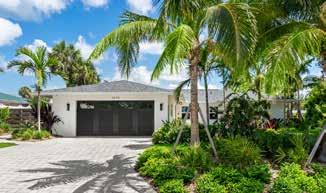
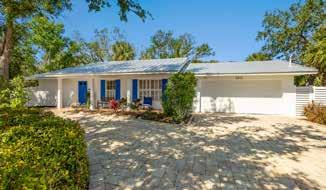
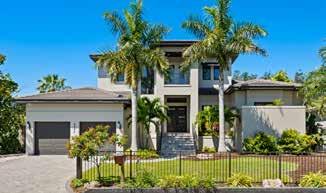


September 10, according to meteorologists, is the peak of the hurricane season. Activity generally slows in October, and the season ends on November 30.
At the time of this writing in mid-August, five named storms: Andrea, Barry, Chantal, Dexter and Erin had formed this season. Of that group, Hurricane Erin was the only one of these five to reach major hurricane strength.
When Hurricane Erin was officially named a hurricane on August 14, it went on to become a Category 5 hurricane at its peak. Fortunately for the Siesta Key region and the state of Florida, it did not impact Florida or the East Coast of the United States. Its formation made many in our area nervous and concerned.
The damage done by last year’s flooding and winds that came with the arrival of Tropical Storm Debby and Hurricanes Helene and Milton are not forgotten. In their final forecast for the 2025 season, Colorado State University predicted a total 16 named storms. Of those, they said, eight are expected to become hurricanes with three reaching a Category 3 or higher level. This reflected a slight decrease from their June forecast that called for 17 named storms, nine to reach hurricane status and four to become a Category 3 storm or higher.
At the beginning of August, CSU had called for a “slightly above normal” season while noting “lower than normal confidence with this outlook.”
By Jane Bartnett

The uncertainty, they advised, is tied to the “Caribbean shear” that was seen in late July. Their news release stated that “«typically, high levels of Caribbean shear in June-July are associated with less active hurricane seasons.”
While residents of the Siesta Key region have been quietly grateful that the hurricane season that began in June has been quiet so far, there are still several months to go.
CSU scientists stated that “we anticipate a slightly aboveaverage probability for major hurricanes making landfall along the continental United States coastline and in the Caribbean for the remainder of the hurricane
season.”
In early August, Phil Klotzbach, of CSU’s tropical meteorology project team wrote that “warm water in the Caribbean is fueling the formation and strengthening of storms. Sea-surface temperatures in the eastern and central tropical Atlantic have anomalously warmed over the past few weeks and are now somewhat warmer than normal, although not as warm as they were last year at this time.”
“The continental United States coastline and the Caribbean have a slightly above-average probability for major hurricanes making landfall during the remainder of this hurricane
season,” CSU reported. “The state of Florida also remains vulnerable with an 89% chance of being impacted by a tropical storm and a 61% chance of being affected by a hurricane.”
This season’s earlier storms, although weak, were deadly. They are believed to have caused the 4th of July Texas floods and flooding in North Carolina.
“Neutral conditions are in place,” reported the Weather Channel, “which means water temperature in the equatorial Pacific are near average. Neutral conditions have historically tipped the scales toward a more hospitable atmosphere for Atlantic tropical storms to form, although La Niña conditions (cooler equatorial Pacific waters) are usually most favorable.”
“The new outlook remains slightly above the 30-year average number for both hurricanes and storms,” advised The Weather Channel. However, this is “below the tally of 18 storms, 11 hurricanes and five Category 3-plus hurricanes in 2024.”
On August 7, NOAA released their update on the hurricane season and said that there could be as many as nine hurricanes to come before the end of November. NOAA also decreased their previous May forecast, while still calling for an aboveaverage season. According to NOAA, a “typical hurricane season will yield 14 named storms, of which seven become hurricanes and three become major hurricanes.” The NOAA
forecast calls for 13- 18 named storms, 5-9 hurricanes and 2-5 major hurricanes.
“As we enter the second half of the season, this updated hurricane outlook serves as a call to action to prepare now, in advance,” stated Acting NOAA administrator Laura Grimm, according to a press release, “rather than delay until a warning is issued.”
“No two storms are alike,” said NOAA’s National Weather Service Director Ken Graham. “Every storm presents unique, life-threatening hazards that can impact people in both coastal and inland communities. Have a plan in place, and know the actions you should take before, during and after the wide range of hazards that the hurricane season can bring.”
The National Hurricane Center website, hurricanes.gov, provides up to date information on tropical storm and hurricane activity in both the Atlantic and Pacific Ocean basins. Updates are also available on X at @NHC_ Atlantic and on Facebook.
Download Sarasota County’s free emergency preparedness guide that includes vital information on services available throughout the county and find more resources at scgov.net/ beprepared.
To receive Alert Sarasota County texts, subscribe at: alertsarasotacounty.com.
Sign up for Sarasota County emergency updates by email at alertsarasotacounty.com.

Ben Quartermaine to provide ‘direction, transparency’ for new county stormwater department
The 2024 hurricanes proved the importance of a healthy, updated stormwater system in Sarasota County.
Formerly a component of the public works department, the new stormwater department was established in July to intensify flood protection and sustain functioning watersheds throughout the county ahead of peak storm season in 2025.
For the role of Sarasota County Stormwater Director for the new department, the county chose Ben Quartermaine, a 30-year veteran of stormwater management, who previously was employed by the county in a range of engineering and leadership positions connected to stormwater operations. Born in Sarasota County and a resident for most of his life, Quartermaine graduated from Riverview High School in 1990 and earned a Bachelor of Science in Civil Engineering from the University of Central Florida in Orlando.
Following his work for the county, Quartermaine was employed as a Senior Project Manager at Stantec and was a project engineer for portions of the design of the Celery
Fields, a 400acre county park which also serves as its primary stormwater collection site.
“I’ve done a lot of work with stormwater models and building the models in Sarasota County, and worked as a young engineer for Sarasota County, building, modeling and understanding hydrology, understanding our hydrology, locally,” he said in a county video interview disseminated Aug. 11, the day Quartermaine officially started his new role.
By ChrisAnn Allen

“Ben’s deep technical knowledge, passion for water resource conservation and proven leadership make him the ideal person to head our stormwater efforts,”
Jonathan Lewis, Sarasota County Administrator, said in
a July 7 County release. “We are confident his expertise and leadership will prepare us for the future.”
Quartermaine said he
greatly looks forward to creating policies and procedures for stormwater maintenance that apply to current standards and situations, as well as for the future.
“The highest priority right now is transparency and sharing the data that we have so that not only the residents, but other county employees, that they understand what we are doing, what our plan is, what our schedule is, and they hold us to task, to meet or exceed those schedules,” he said. When asked what improvements he’s planning for stormwater in the new county department, Quartermaine said, “Initially, get a handle on sedimentation. Get a handle on maintenance that we really haven’t done to the degree that is necessary, in the past. And that’s maintenance of our ponds and maintenance of our canals and moving sedimentation. And it’s expected that sediment collects over time, but we need management of the sediment, moving forward… There are areas all throughout the county that are experiencing sedimentation issues and it’s become clear that they’re a problem and we need to address it.”
According to the county release, Quartermaine’s primary responsibility will be to create and carry through stormwater and flood mitigation plans involving infrastructure planning and maintenance, with a focus on long-term resilience and inter-agency collaboration. “I have to keep water out of the houses,” Quartermaine said. “I have to keep water off of evacuation routes. We know that. But transparency of data is critical right now.”
More information about the Stormwater Department, including weekly project updates, can be found at: scgov.net/government/ stormwater

Local Love: Why Sarasota’s Artists Are the Heart of Boca Boutique
At Boca Boutique, we’ve always believed that the soul of Sarasota lives in the very quali ed hands of our local artists. When you walk into our shop you’re fully immersed in their creativity: clay pottery shaped with care, coastal crafts inspired by our beaches, hand-painted sh and amingos bursting with personality, glassware brushed with color, jewelry that tells a story, and prints that capture the magic of Florida living.
These pieces aren’t just another item you put on your shelf; they’re made by your neighbors, friends, even people you might’ve stood behind in line at the grocery store. Each piece comes with hours of work, decades of skill, and a little piece of the artist’s heart.
We choose local over mass-produced every. single. time. Sure, while factory-made items can be easy to nd, they’ll never have the story or care that comes from something handcrafted right here in our community. When you buy local, you’re keeping a dream alive, helping an artist pay their bills, and fueling the kind of creativity that makes Sarasota such a special place to live.
To celebrate that, every two weeks during the summer we host our Local Artist Series right here in the shop. We bring in one of our incredible artists to share their craft, tell their story, and teach you how to make

something with your own hands. It’s not just a class — it’s a night out. We have drinks, delicious bites from local food vendors, and a whole lot of laughter. Whether or not you’re in touch with your creative side, you’ll leave feeling inspired (and maybe with a new piece you made yourself). These nights aren’t just about art they’re about connection. It’s friends and strangers laughing together, people discovering new talents, and our community growing stronger through shared experiences.
Supporting local artists reminds me why I opened Boca Boutique in the rst place: to create a space where art, community, and conversation come together. Supporting local isn’t just about shopping small; it’s about building a place where creativity can ourish and where we all feel connected.
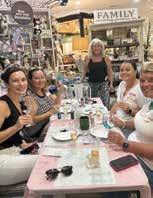
Next time you’re here, take a minute to really look around. The seashell ornaments, hand-painted glasses, and prints have a face, a name, and a story behind it; and when you take one home, you’re carrying a little piece of Sarasota with you.
Sip and Shop
4 to 6 pm on Thursdays! Second Thursdays: Open till 7 pm













By Jennifer Amato
With hurricane season in full swing, getting caught in a rip current is one of the most dangerous aspects of swimming in the waters of the Gulf of America.
Rip currents are caused when water from the Gulf gets trapped near the shoreline and essentially fights itself, getting caught at a low point in the sandbar as it tries to move back out to sea, according to a description by Captain Chris Lender of the Sarasota County Fire Department Lifeguard Operations. A storm system in the Gulf and/or strong winds are the most likely causes, with weatherbased systems causing rapid water movement.
A rip current has three sections, according to information from the Sarasota County Fire Department Lifeguards division: the head is where the water spreads out and weakens; the neck is the actual rip, or river, of water; and the feeder supplies the source for the rip.
“They vary in intensity so they can get dangerous pretty quickly,” Lender said. “Regardless of where the storm is in the Gulf, it could have some effect on our shore.”
Tell-tale signs of a rip current include milky or chalky water (often dark), since sand and debris churn up; plus, floating seagrass and bubbles, almost like a calm
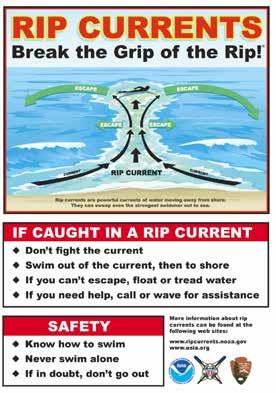
“conveyor belt” as the water pushes out to the Gulf, Lender said.
Rip currents can move at speeds of up to 8 feet per second, according to the National Ocean Service, part of the National Oceanic and Atmospheric Administration.
Since rip currents are random and quick to occur, there is not much you can do to avoid getting caught – “escaping a rip current
is a pretty difficult task for all levels of swimmers, from the beginner swimmer to the more experienced swimmer,” Lender says – but there are ways to safely find your way back to land.
First, Lender says, is to stay calm; panicking will only make you more tired. You should swim parallel to the beach and not swim toward the shore; a rip current generally is not very wide, so you can tread water or float to its edge. If you do get pulled out further, you should wave for help; at this point, lifeguards will grab a flotation device like a rescue buoy or rescue paddleboard to help you return safely ashore.
Sarasota County has about 30 lifeguards on staff, 16 of whom have EMT certification in addition to the mandatory CPR and first responder training. They guard their lifeguard stands from 10 a.m. to 4:45 p.m. every day, year-
round; and extend their hours to 6:45 p.m. on major holidays.
Lender suggests speaking with the lifeguards at the beach to stay informed of any safety concerns. Checking the warning flags is imperative, too. He said you should always swim in the sight of a lifeguard and follow the buddy system when out in the water. “We like to say, ‘If in doubt, don’t go out.’”
Rip currents account for over 80 percent of rescues performed by surf beach lifeguards, according to information from the National Oceanic and Atmospheric Administration. The United States Lifesaving Association estimates that the annual number of deaths due to rip currents across the country is more than 100 per year.
There have been 25 surf zone fatalities due to rip currents in the U.S. so far in 2025, 10 of which have occurred off the coasts of Florida, but none of which have taken place in Sarasota County, according to the National Weather Service.
Lender said hundreds of people get caught in rip currents annually throughout the 35 miles of Gulf Coast across six beaches of Sarasota County (Lido, Siesta, Nokomis, North Jetty, Venice and Manasota).
On the upside, Sarasota County has had two significant saves as of late:
• In June 2024, off-duty lifeguard Mariano Martinez rescued seven swimmers in distress, and helped even more swimmers to safety, after a rip current carried them 200 yards off Lido Beach, caused by an evening storm. He directed them in Spanish, having been a lifeguard in his native Argentina, and used his swimming skills and bodyboards to bring them back during multiple trips. He received The National Medal of Valor by the United States Lifesaving Association and was named Lifeguard of the Year by the Florida Beach Patrol Chiefs Association in May 2025, according to information provided by Sarasota County government news.
• In May 2025, lifeguard Landon Lacy was off duty at Venice Beach when he rescued two swimmers who drifted out about 150 yards into the water after a thunderstorm. He swam out to the first swimmer and returned via a rescue board to get the second person, according to information provided by Sarasota County government news.
Lender noted that rip currents are different than rip tides, which describe tidal currents in an inlet or channel.

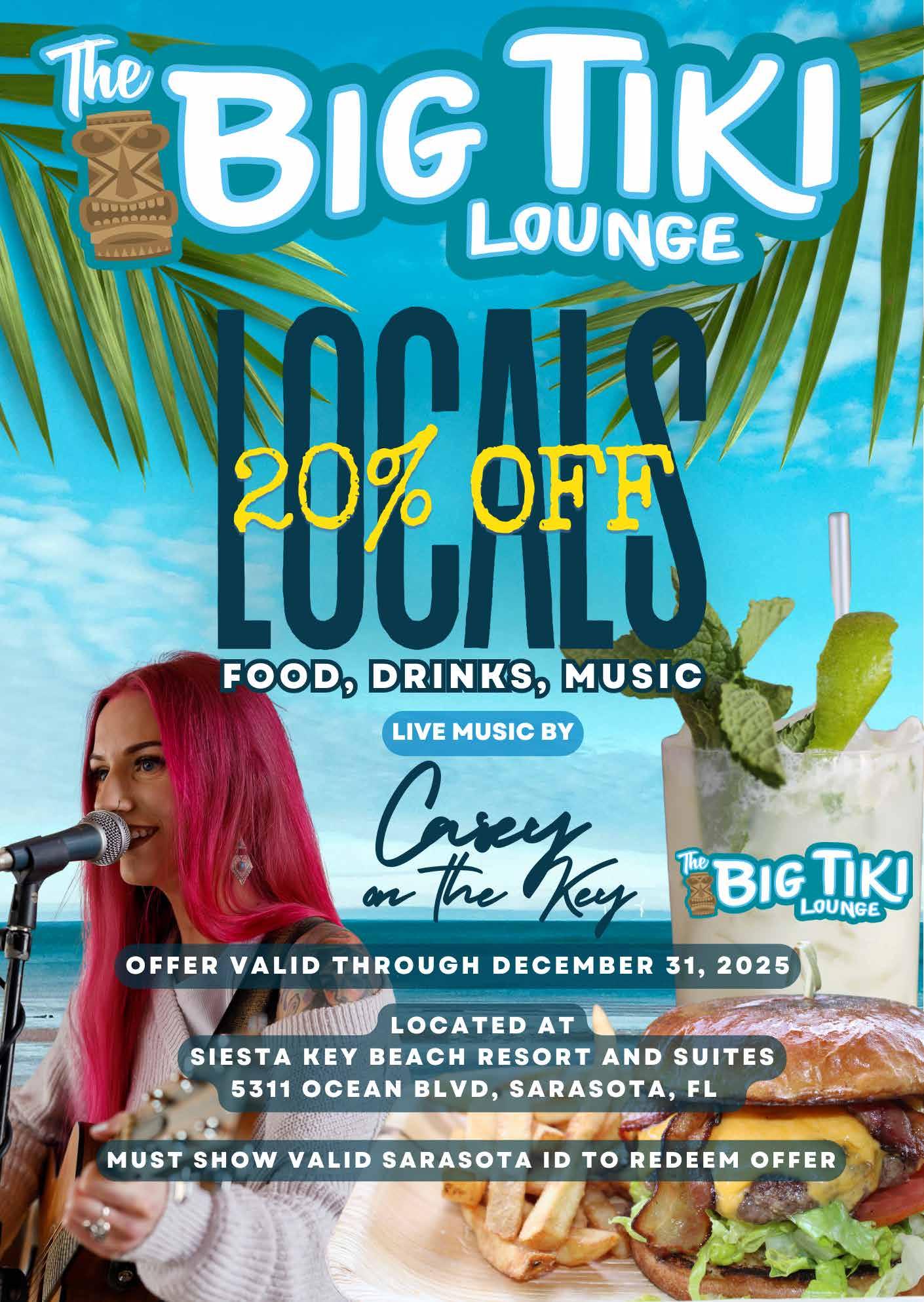

Hurricane Preparedness
Sarasota County encourages everyone download the county’s free Hurricane Preparedness Guide. This guide contains essential tips, checklists and resources to help you and your family stay safe. Visitscgov.net/beprepared.
William Raveis
Wins Award
William Raveis, the number one familyowned independent real estate company in the Northeast,Florida, andSouth Carolina, was awarded the Top Luxury Brokerage by Inman Golden I Club 2025 award. Known to be the “highest honor in luxury real estate,” William Raveis’also garnered two finalist spots for “Top Luxury Team” and “Best Sales & Marketing for a Luxury Home or Property.” The awards ceremony took place at Inman Luxury Connect in San Diego. The event was attended by top professionals in luxury real estate.

Siesta Key residence lists for $15.950 million
A Tudor style home at 4315 Mangrove Place has listed for
$15,950,000. The 7,535 square foot home sits on a 0.61-acre prime waterfront lot on South Cocoanut Bayou Island on the northeast end of Siesta Key. The residence, built in 2005, features six bedrooms, six bathrooms and three half-baths. In addition to a three-car garage, the home includes an elevator, saltwater pool, spa and deepwater dock. The kitchen in the main house has Subzero and Wolf appliances as well as a professional grade wine storage area. A private theatre is also found in the residence.
The guest house has a kitchen and private elevator. Listing agents are Inbal August and Douglas Ellliman of Douglas Elliman Real Estate. Elliman.com
Mote Marine awarded state funding for snook stock initiative
Mote Marine Laboratory has received $250,000 from the state of Florida to support its Strategic Snook Stock Enhancement Initiative, just weeks after releasing a record number of juvenile snook into Sarasota waters.
State Rep. Danny Nix presented the check to Mote on July 21, calling the program an investment in Florida’s environmental and cultural heritage.
“Florida’s future depends on how well we protect what makes our way of life so special — our waters, our wildlife, and our heritage,” Nix said. “Mote Marine Laboratory is leading the way with science and innovation, and I’m proud to support their mission.”
The state funding, included in the annual budget, follows Mote’s release of 28,000 juvenile snook into Sarasota Bay estuaries in late May. The milestone more than doubled the organization’s previous record. Researchers are now monitoring the fish
using genetic tagging to measure survival rates and determine their contribution to the wild snook population.
The initiative is part of Mote’s Fisheries Ecology and Enhancement Program, which focuses on rebuilding fish populations and maintaining ecological balance. Snook, a prized species for recreational anglers, play a vital role as apex predators in coastal ecosystems but remain vulnerable to environmental stressors such as habitat loss, cold weather, and red tide.
Beyond its ecological value, the initiative also carries significant economic weight. Saltwater recreational fishing generates $9.2 billion annually in Florida, and snook are among the most sought-after catches. The Florida Fish and Wildlife Conservation Commission issues more than 500,000 snook permits each year, while commercial harvest of the species remains prohibited.
To produce the fish for release, Mote scientists breed and raise snook at the Mote Aquaculture Research Park, located east of Interstate 75 off Fruitville Road. From spawning to juvenile development, the facility provides controlled conditions that allow for large-scale production of healthy fish for restocking efforts.
With the additional state funding, Mote officials say they will continue expanding their stock enhancement work and strengthen efforts to track the released snook. The research not only supports local recreational fishing but also contributes to broader discussions about the sustainability of Florida’s coastal ecosystems.
“Mote’s science-based approach is ensuring that future generations can enjoy Florida’s natural resources,” Nix said.

And
Corcoran
Sotheby’s


























7-20-25 Burglary
Complainant reported to the Sheriff’s Deputy that he received a call from his neighbor who informed him that someone was staying at the complainant’s address. When the Sheriff’s Deputy arrived to check on the address, he saw a bag of chips, a car fob, and a small, blue wallet in the apartment. While canvasing the neighborhood, the owner of the car was located, read her Miranda rights, and detained. A male was also observed trying to conceal himself in the resident parking lot, and he ran away from the scene when the Deputy approached. A latent print was recovered from the thermostat and submitted into evidence.
7-17-25 Possession of Controlled Substances
A Sheriff’s Deputy was conducting a park check at Turtle Beach when he observed a vehicle parked after hours
while the park was closed. The windows to the vehicle were covered, so the Deputy knocked and identified himself as law enforcement. A man opened the rear passenger door and appeared to have been sleeping in the back seat. When the door opened, the Deputy observed a large pill container and halffull bottle of alcohol. Upon discussions and review of the pill container, the suspect was charged with possession of various controlled substances.
7-14-25 Vehicle Theft
Complainants parked their car in the Siesta Key Beach parking lot and walked to the beach. At approximately 4:00 p.m., complainants returned to the area where they parked and were unable to locate their car. The complainants did not see anyone take their vehicle, and they still had possession of the car keys. A Sherrif’s Deputy confirmed that
there was no record of the vehicle being towed.
7-28-25
The defendant ordered a beer and two other drinks from a Village bar. The defendant paid for the beer, but refused to pay for the two other drinks, claiming they were for two females. A Sheriff’s Deputy gave the defendant the opportunity to pay the bar bill, but, when he refused, he was charged with obtaining food/beverage with the intent to defraud.
7-24-25
The complainant reported to the Sheriff that on 7-12-25 an unknown suspect used his name and other personal identifying information to access an airline frequent flyer account and redeem 50,000 miles, which had a value of approximately $500. The complainant also notified the airline of the fraud.


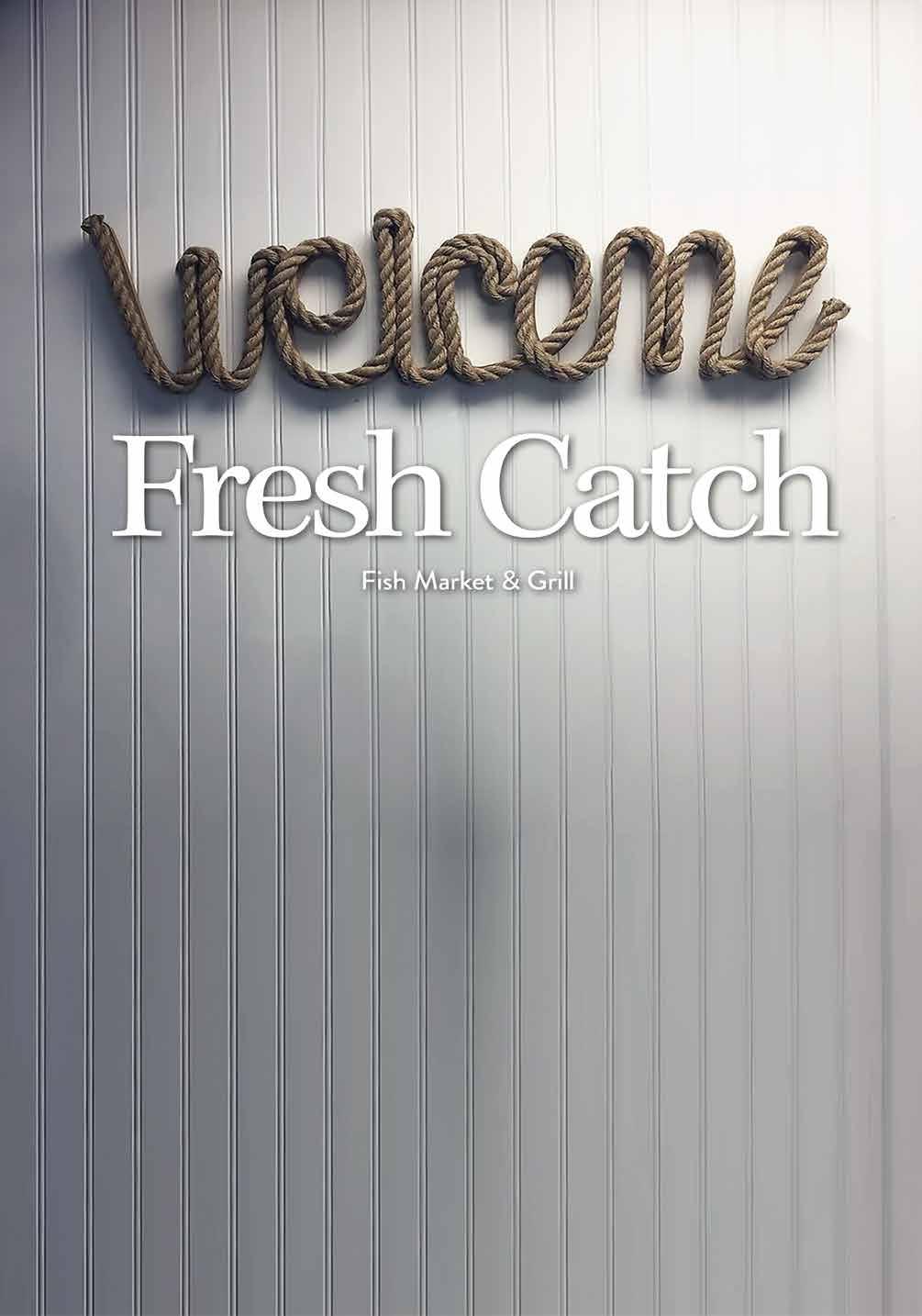










Favorite for really fresh seafood. We eat "Linnner" at 2-3 PM frequently, and we eat here often. Lots of restaurant choices in this area, but we always end up here on seafood days. Their options are many, prepared to order, and fresh with the season. The service is really good, too.
very casual ambiance.



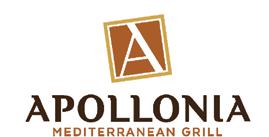
3
By Jennifer

One of the most iconic images of Florida is the palm tree, but did you know there are several varieties of the beautiful tree – and that certain types grow in Siesta Key?
Some of the most common in the area include the Coconut Palm (Cocos nucifera), Foxtail Palm ( Wodyetia bifurcata), Areca Palm (Dypsis lutescens), Pygmy Date Palm (Phoenix roebelenii ), and Christmas Palm (Adonidia merrillii ). Among the top native species are the Royal Palm (Roystonea regia), Florida Thatch Palm (Thrinax radiata), and the Sabal Palm (Sabal palmetto), which is also Florida’s state tree.
“Siesta Key’s warm, coastal climate is perfect for a wide variety of palms,” said Ryan Empey, president of Lead Landscape Design and Tropical Gardens Landscape, which offers landscaping services in Sarasota, Siesta Key and Longboat Key. “Historically, palms like the Sabal and Saw Palmetto were used by Native Indian tribes for food, shelter (such as Chickee huts), and other building materials. They’ve become woven into our state culture and visual

identity. Whether lining roads or swaying along the shoreline, they remain an enduring emblem of Siesta Key and Florida in general.” Each species has its own specifications as to its general age and height:
• Coconut Palm: 50-80 years; 60-70 feet tall
• Royal Palm: 50+ years; 60-70 feet tall
• Foxtail Palm: 30-50 years; 2030 feet tall
• Areca Palm: 40-50 years; 15-20 feet tall
• Sabal Palm: 70-100 years; 4050 feet tall
• Florida Thatch Palm: 50-100 years; 15-20 feet tall
• Christmas Palm: 25-50 years; 12-25 feet tall
• Pygmy Date Palm: 25-50 years; 8-12 feet tall
There are different trees planted in commercial and residential settings. Empey said commercial properties often feature large, dramatic palms—such as Royal, Bismarck, Canary Island Date, and Medjool Palms—”to create a bold visual impact and complement the scale of larger buildings.”




trees beautify Siesta Key


He said residential landscapes, on the other hand, “typically incorporate palms that fit the proportions of the home.” Smaller to mid-sized species like Foxtails, Areca Palms, Pygmy Date Palms and Christmas Palms provide a lush, tropical look without overwhelming the space, he said.
The key to a successful tree is proper planting. Empey said choosing a well-drained location and setting the palm at the same depth it was grown in its container (and not deeper) are the first steps to tree health.
“Backfill with the native soil, avoiding heavy amendments that can restrict root growth in the planting hole. Water deeply directly after planting, while keeping the root zone consistently moist for the first several months. For ongoing care, fertilize four times per year with a slow-release palmspecific fertilizer containing magnesium and manganese, prune only the dead or brown fronds, and provide supplemental irrigation during any dry periods,” he said.
The lifespan of a tree also
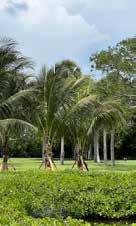
depends on external factors, such as the weather and the climate.
“ Following last year’s historic hurricane season, we observed many non-native palms performing exceptionally well, while some commonly used varieties proved unable to withstand the salt intrusion,” Empey noted. “ Some of our most salt- and wind-tolerant palm species are the Sabal Palm, Coconut Palm, Bismarck Palm, Florida Thatch Palm, Paurotis Palm, Royal Palm and Christmas Palm. Their flexible trunks and strong root systems help them to withstand high winds and flooding, making them excellent choices for coastal or hurricane-prone locations.”
Overall, palm trees are one of the most beautiful and representative symbols of Florida.
“ Palms have long been a symbol of South Florida’s tropical beauty. They call to mind our sunshine, beaches, and a more relaxed way of life. These are all qualities that draw so many people here,” Empey said.







QIn1994, The Out-of-Door Academy’s Siesta Key Campus was named to the National Register of Historic Places. Due to last year’s hurricane damage, several of the historic buildings on the Siesta Key campus were so severely damaged that they had to be torn down. What will replace these buildings? Were you able to save any important historic elements?
ALast year’s hurricanes dealt a significant blow to our campus, but fortunately, we only lost one historic building—our administrative building at the time. This structure, one of the campus originals, served as the Boys’’ Residence during the school’s boarding years (1924–1958). Originally an Army barracks, it was donated to the school and became an enduring part of our history.
Our two other historic buildings—the Catherine Gavin Memorial Library and the Theatre (now the multi-Purpose Room)— were miraculously spared. Both were designed by Ralph Twitchell in 1932 and 1935, and the library was even built by students. Today, the library houses my office, while the Theatre serves as our MultiPurpose Room, Learning Lab, and music classrooms.
The former administrative building site has been transformed into an open gathering space with games and activity areas. In time, it will become the site of a new welcome and reception center.
QThe beginning of the school year is always an exciting time filled with hope and plans. Last year, during the 2024/2025 school year, ODA celebrated the school’s 100th anniversary. What does the new 2025/2026 school year hold in store for students, teachers and alumni?
AWe are excited to begin our ’25–’26 school year. Our team worked nonstop over the summer to create classrooms ready to
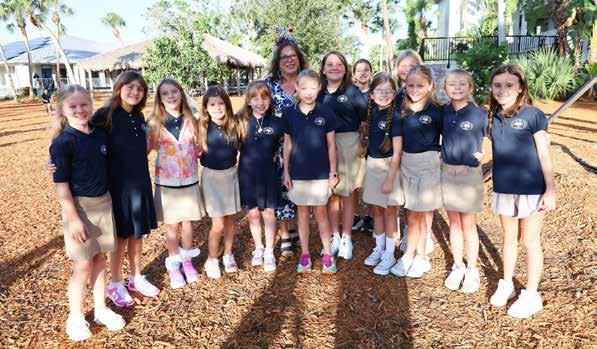
welcome students to a year filled with possibility and joy.
This year, we will continue to provide students with the skills they need to thrive in a changing world. ODA’s next century will balance tradition and innovation, blending creativity and neuroscience. Every student will be seen, valued, inspired, and nurtured to reach their full academic and human potential.
At our Lower School on Siesta Key, we now have the privilege of educating not only the children but also the grandchildren of our alumni—a milestone that speaks to the strength of our roots and the reach of our branches. Every day is an opportunity to grow together, celebrate successes, and build memories that connect families well beyond the school years.
QThe Siesta Key Lower School ODA campus educates children from pre-kindergarten through Grade 5. What kind of collaborations and programs do you have with the new Clark Road
ODA lower school that opened a year ago?
AOpening our second lower school campus on Clark Road extended the opportunity for an ODA education to families east of I-75. While we now have two campuses, the ODA Lower School remains one school in spirit and practice.
This year, students from both campuses will visit each other for events and learning opportunities. Teachers plan units, attend professional development, host meetings, and collaborate across campuses. Grade levels come together for field trips and celebrations, strengthening connections across locations.
QThe Out of Door Academy upper school in Lakewood Ranch serves 6th - 12th grade students. What kind of educational and extracurricular programs bring the younger and older students together on the Siesta Key campus?
AOur educators work to ensure everything taught from pre-k through grade 12 is aligned. Lower schoolteachers collaborate with department chairs across divisions, and The Bridge—a cross-division team—focuses on academic continuity.
Beyond academics, our arts and athletics programs span divisions, with shared teachers, coaches, and experiences. Lower school students can try new things in a safe environment while building relationships with older students. We also unite as ONE ODA during events such as Convocation, Friendsgiving, Homecoming, and Thunder Fun Day. These moments foster true connection across ages. When I first attended ODA Homecoming 12 years ago with my then 3- and 8-year-old children, I expected an event for older students, but it began with a huge family picnic, bounce houses, games run by upper school students, and plenty of school spirit. Then, we headed to the stadium, where younger students
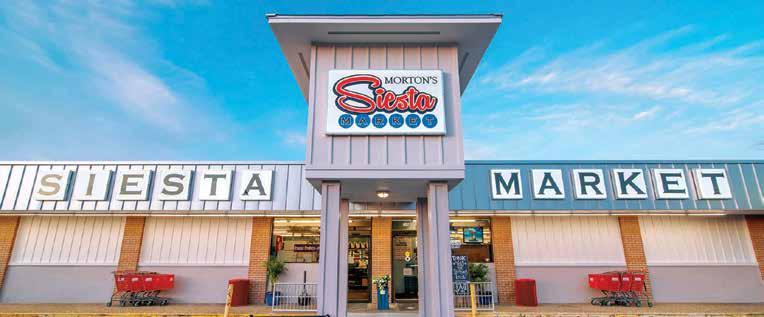

toss footballs on the sidelines while the varsity team warms up. It felt like, and continues to provide, a small-town moment, with families enjoying time together in a safe, joyful environment.
QHow does the ODA Siesta Key lower school curriculum make use of the natural wonders of Siesta Key as a learning tool for your young students?
AThere is truly nothing like the magic that is our historic Siesta Key campus. The natural beauty of Siesta Key blends perfectly with the more modern needs of a school today, while remaining true to the original mission of our two founders, Fanneal Harrison and Catherine Gavin. Nearly a century ago, they understood that fresh air, active days, and wholechild development were key to learning—an approach now backed by research.
The entire campus is a learning environment, with outdoor classrooms, an open-air pavilion, amphitheater, and traditional Chickee Huts. Students learn responsibility toward the island through composting, solar power, and gardening.
Last year, two students designed seals to protect Siesta Key waterways, placing decals on sewer openings in the Village. On Earth Day, our campus cleans the public beach—arriving in uniform, gloves, and buckets to do our part for the island we call home.
Our Marine Science program uses the canals, waterways, gulf, and bay surrounding Siesta Key. For over 20 years, we’ve partnered with MOTE Marine, giving students hands-on experiences that even continues into our middle and upper school curriculum and collaboration among the divisions.
We are always looking to make connections with our Siesta Key community partners and welcome the chance to collaborate even more in the future!






Caesar Salad … $21
Kale Salad … $22
SANDWICHES
Grouper Sandwich … $22 Salmon BLT … $21 Mahi Mahi Sandwich … $21 Chicken Sandwich … $15
Cheeseburger … $15
Burger … $13
Filet Mignon & Stuffed Shrimp … $36
Filet Mignon & Maine Lobster Tail $50
Stuffed Shrimp & Maine Lobster Tail $42
Maine Lobster Tails … $55
PASTA & BOWLS
Shrimp & Crab Scampi … $25 Salmon Pasta … $23
Chicken & Shrimp Curry … $22 Sweet ‘n Spicy Chicken & Shrimp $22 Jambalaya … $24
Pasta Primavera … $17
DESSERTS Turtle Pie … $10
Lime Pie … $10 Sample Platter … $13
Cream Bar … $7 *Prices subject to change
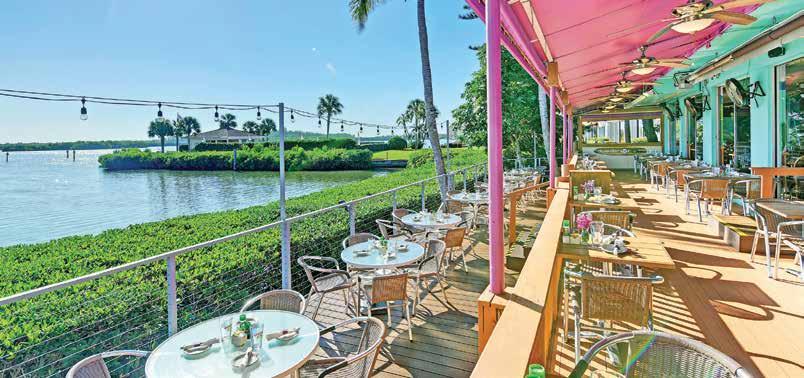
Jacaranda West - A Hidden Gem in Venice That’s Well Above Par
By Scott Dolan
Although it sits just a short drive south of Sarasota, right off Exit 193, Jacaranda West Country Club in Venice, Florida feels like a golfer’s getaway worth talking about. Venice is home to plenty of great tracks—Founders Club, Capri Isles, Waterford, and Calusa Lakes among them— but time and time again, I find myself coming back to Jacaranda West.
Why? Simple: it’s not the hardest course in town, but it’s one of the most rewarding. With trees guarding both sides and wide, inviting fairways down the middle, Jacaranda gives golfers of all levels a chance to play smart, take risks, and maybe even card their personal best.
A Tee-rific Start
Our round began with a 9:30 a.m. breakfast sandwich and a “swing juice” (yes, that’s a Bloody Mary from the cart). With a little fuel and courage, we teed off on No. 1—a hole that looked like a breeze from the tee box but quickly proved more challenging than it appeared. A bogey opener set the tone, but sometimes steady bogeys

lead to surprisingly great rounds.
Hole Highlights
My favorite hole of the day? No. 7. Picturesque, comforting, and just plain fun to play. Maybe it’s because I made par there (golfers are sentimental like that), but it truly feels like one of those holes you look forward to revisiting each time you come back.
When I asked golf pro Chris Adams what the signature hole was, his answer made me smile: “For me and the grounds crew, every hole is our signature hole.” Far from boastful, his words rang true. Every time I’ve played Jacaranda, I’ve noticed the maintenance team out in full force. Even in the heat of August, the course was lush, green, and beautifully kept.
And let’s be honest—you can’t say that about every course. Jacaranda West clearly takes pride in its playability, and it shows.
The Team Behind the Turf Credit goes not only to Chris, who doubles as a high school and youth






golf coach, instructor, and all-around ambassador for the game, but also to golf superintendent Rick Jacobs and his hardworking crew. Their dedication is evident on every fairway, every green, and every bunker. It’s no exaggeration to say they’re driving this course’s reputation forward.
Jacaranda West is what I like to call a risk-reward course. If you play it safe, you’ll still enjoy a smooth round. But if you’re feeling bold -- go for it! Especially from the whites, you’ll find plenty of chances to take aggressive lines and walk away smiling.
Jacaranda West may not always top the lists of “most challenging courses” in Florida, but that’s not the point. It’s fun, fair, and beautifully maintained—a place where golfers can relax, take risks, and truly enjoy the game. In my book, that makes Jacaranda West not just a good play, but a hole-in-one choice for Venice golf.

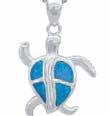
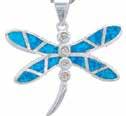











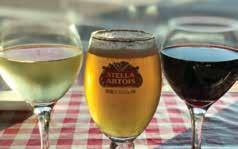



on the key, and it makes a big difference.”
Prior to the discussion of current and upcoming projects, Smith briefly explained Senate Bill 180, put into action this year, which limits the county commission’s ability to enforce construction moratoriums or adopt land-use restrictions for one-year, post-hurricane, if the jurisdiction is within 100 miles of the storm’s track and was shielded by a federal disaster declaration. SB 180 applies to Sarasota County due to Hurricanes Debby, Helene and Milton, and will stand through Oct. 1.
Smith said his ongoing push to allow older buildings to voluntarily be demolished and rebuilt to current codes before being destroyed in a hurricane – a provision not currently allowed but working its way through the county approval process – would not be affected by SB 180, as it would be “voluntary” and meet updated restrictions. “We would not be increasing density and intensity by doing this,” he said.
Smith led the list of projects with several items including updated “intelligent transportation” for the north and south bridges, to aid the bridge tender, and other traffic safety measures, including cameras and timed lights; Ocean Boulevard resurfacing, which Smith said was mostly completed; and repairing and reinforcing lift stations which were submerged in the 2024 storms.
He said Midnight Pass “was open still,” with a presentation by Public Works Director Spencer Anderson forthcoming at a Sept. 9 commission meeting. Historically separating Siesta Key from Casey Key, the pass, which was filled by homeowners in the 1980s due to property erosion concerns, was reopened by Mother Nature because of the 2024 hurricanes.
Michael Holderness, coastal activist and Siesta Key business owner, shared concerns regarding Midnight Pass, stating the northern corner of the pass is being stabilized by dying mangroves, causing the beach to narrow, and suggested action be taken preemptively to keep the pass open. “I’m not saying we have to do it today, but it would be really nice to have our plan in place for when it is needed, right?” Holderness asked Smith, who responded Holderness should attend the Sept. 9 meeting, prepared with a presentation and provide photographs to support his assertions. “A picture is worth a thousand words,” Smith said.
Additionally, Holderness and fellow Siesta Key business owner Chris Brown, said storm drains throughout the key, including the
Village, are severely obstructed, causing flooding. “When you look inside these big, concrete drains, they are completely clogged,” he said, asking if anyone from the county is surveying the key to see where flooding is occurring. Smith agreed and said there are two “Siesta Key stormwater and watershed studies planned to begin later this calendar year,” with one being a drainage improvement study to include much of the key, with WSP professional services firm as the contractor. “So, they’re going to do something about it,” Smith said, referring to county staff. “Believe me, as a commission, we’re pressing them.”
Additionally, Smith said an ultraviolet water treatment system was planned to be installed at the Siesta Key/ Beach Road Drainage System in the Siesta Key Beach parking lot to improve water quality being discharged into the Gulf of Mexico, as well as a new tidal backflow prevention device installed in the stormwater outfall on Lotus Lane. Smith said the backflow would prevent water from coming back up into the street during a King Tide or storm surge.
Following Smith’s presentation, Brown asked if there are updated plans for public restrooms in the Village, an issue Smith has been pushing for since being elected. Smith said, “Yes,” and cited flooding concerns and said it remains on his list of items to be discussed with county administrator, Jonathan Lewis. When asked about the 2026 fiscal year budget, Smith said the aforementioned projects are included. However, he said funding for the beautification of the key, an initiative started by the Siesta Key Beautification Alliance and the Siesta Key Village Maintenance Corp. (SKVMC), requesting $30 million for aesthetic and safety improvements and backed by U.S. Rep. Greg Steube (R-Fla.), whose district includes the key, was not budgeted. He said he’s told members of the Alliance and SKVMC to attend the Dec. 12 strategic planning meeting with a presentation prepared. “That meeting is when we establish priorities for funding,” Smith said. He continued, “I know we need it now, but we aren’t going to dip into reserves,” and referred to Village improvements he helped spearhead in 2018, saying they hired a landscaper for drawings and spent a couple of years pitching the plans before the county committed to help.
“I think the best bet is to show up with a plan,” Smith said. “And I’ll do my damndest to get it passed.”


Now that the “One Big Beautiful Bill Act” has become federal law, there is a lot to unpack for American taxpayers and investors. Here, we’ll focus on the tax impacts.
For starters, the law permanently extends certain major tax provisions from the 2017 Tax Cuts and Jobs Act (TCJA) that were set to expire at the end of this year, such as permanently extending lower income tax rates for individuals, the higher standard deduction, the expanded child tax credit, the higher alternative minimum tax (AMT) exemption and phasein thresholds, and the higher federal estate, gift and generationskipping transfer tax exemption ($15 million per individual and $30 million for married couples in 2026).
But as the name of the law says, the act is “big,” and there are a number of other changes that could impact American taxpayers. Here’s a closer look:
Individuals: The new law delivers several changes that can help individuals further reduce their taxes, including the temporary ability for taxpayers below certain income thresholds to deduct portions of income for individuals age 65 or older, overtime pay, qualified tips and interest on qualified passenger-vehicle loans; a slightly higher charitable contribution deduction for non-itemizers beginning in 2026 ($1,000 for single filers and $2,000 for joint returns); and greater flexibility

to use 529 accounts for K-12 and homeschooling expenses. The act also extends certain TCJA provisions that limit or eliminate some tax benefits, like the elimination of personal exemptions, limits on the state and local tax deduction (albeit with a higher cap, which is subject to phaseout, through 2029), limits on the amount and type of loans eligible for the mortgage interest deduction and the termination of miscellaneous itemized deductions. Additionally, there are new changes that could increase taxes for some individuals, such as a new 35% rate cap on itemized
deductions and a new floor for itemized deductions of charitable contributions, both beginning in 2026, as well as the elimination of several clean-energy credits.
Businesses: The new law extends or enhances several tax benefits that could help firms up and down Main Street, as well as America’s farmers. For example, it permanently extends TCJA›s «qualified business income» deduction (often referred to as the «199A deduction») for individuals who own «pass-through» businesses (businesses other than sole proprietorships for which owners report business income on
their individual tax returns) and increases phase-in thresholds for the deduction, which may allow more individuals to qualify. It also permanently reinstates the 100% bonus depreciation deduction for qualifying assets placed into service after Jan. 19, 2025; permanently reinstates the ability for small businesses to immediately deduct the full amount of qualified domestic research and development (R&D) expenses in the year they’re incurred (which may be retroactively applied for qualifying small businesses); and for purposes of calculating
business interest limitations, permanently reinstates the exclusion of depreciation and amortization expenses in the limitation base.
Additionally, small business owners and farmers may benefit from an increase to the allowable expense for qualifying property from $1 million to $2.5 million, potentially enabling them to expense more business equipment purchases. And, finally, the act extends or enhances tax credits for employer-provided childcare and paid family and medical leave benefits.
Individuals and businesses can use additional tax savings to meet current expenses or toward a financial goal, like saving for retirement or moving forward with a business expansion. Consider consulting financial, tax, and legal professionals to help assess specific situations.
Joe St. Onge, ChFC® Financial Advisor, Edward Jones Investments 5011 Ocean Blvd., suite 205 Siesta Key, FL 34242 (941)-346-0560 phone (941)-320-4030 mobile Joe.StOnge@edwardjones.com



year,” noting that North Lido Beach had an especially large colony.
This was good news for the region. “In August and September, skimmers start to leave their colonies, and we’ll see them on Siesta,” said Durda. “They are getting into the heat of their migration time as they begin to migrate to Central and South America.”
These small but mighty birds, she said, come from the Northeast and head south for the winter. Powers noted that the popularity of Siesta Key’s beaches makes it a less than inviting atmosphere for migrating birds.
“Their habitat impacts their ability to thrive. They need specific amounts of vegetation and a lot of space,” said Powers.
For thousands of years, according to Audubon, four species came to Sarasota’s beaches: the snowy plover, Wilson’s plover, least tern and black skimmer. The increase in human population along our shoreline led their numbers to plummet. However, conservation efforts to stabilize these vitally ecological populations are helping to stabilize these numbers.
Durda noted that when migratory species stop over on Siesta Key on their long journey south, “they have flown thousands of miles from their northern summer residences. It’s important to keep
in mind,” she said. “They are using our beaches to rest. They are migrating and we must give them time to recover from their journeys.”
One of the most harmful activities that humans and dogs engage in, she said, is what is called “flushing.” Although it appears harmless, when children, adults or pets rush toward a group of birds on the beach, the birds are terrified, and it drains their energy. “A lot of human actions, while unintentional, do accidental damage to these migrating birds.”
The endangered snowy plover, listed a threatened species by the state of Florida, is protected and visits Siesta Key beaches. Like other shorebirds, they need space and privacy to thrive and survive. The Wilson plover considered threatened as well, and the American oystercatcher are two other migratory birds that can be seen on Siesta Key beaches.
When visiting the beach, Powers and Durda urge awareness and consideration for the challenges facing these migrating birds. She offers a few easy tips to take into consideration when visiting the beaches that we share with these winged creatures. A few thoughtful actions on our part will help to ensure that shorebirds thrive and return to our coastline in the years to come.





Walk around big flocks of birds. Give them space. Let them rest. Remember, they have many miles to go.
Leave your pets at home. During breeding season, dogs on beaches can negatively impact breeding birds and threaten their survival.
Be aware of signs and roped off areas and avoid these nesting sites.
Watch from afar and keep a distance. Allow shorebirds and any other birds that you encounter to be at home in their natural surroundings.
Do not allow children to run toward birds gathered on the beach and cause them to fly away. It may look like harmless fun, but this causes real harm to migrating birds who must rest and regain their strength so that they can complete their journeys and continue for thousands of miles.
The Sarasota Audubon Society’s Coastal Stewardship program works at protecting sea, shore, and wading birds at more than 300 sites across Florida. To become a bird steward and join their flock, log onto Audubon.org/florida. This fall, public education and bird walks are planned. Download their free bird watching app to learn about the many shorebirds and seabirds that we share our land with on Siesta Key and the region.






HIGHEST PRICED SINGLE-FAMILY RESIDENCE
3465 GULFMEAD DRIVE
$4,325,000
Located on the north end of Siesta Key, this custom-built luxury waterfront home sits on a very private lot, surrounded by lush tropical landscaping and offers deep-water access, boating convenience, and serene natural beauty. The flexible layout includes 5 en-suite bedrooms, an elevator to all three levels, and a spacious main-level suite ideal for guests or multigenerational living. An engineerapproved option to remove a non-load-bearing wall allows for easy creation of a great room concept—a virtual rendering is included in the photo gallery to illustrate the potential. The chef’s kitchen features GE Monogram and Fisher & Paykel appliances, a butler’s pantry, beverage station, and pocketing glass doors opening to a full summer kitchen, PebbleTec saltwater pool and spa, and lush outdoor spaces. Hurricane-rated windows and doors, elevated construction, and a full-home generator protected the interior during recent storms—no water intrusion or damage occurred, with water reaching only the garage level. Extras include a 13,000 lb. lift, composite dock, 3-car garage with EV charger, whole-house water filtration, security system, and ample storage.
Courtesy of Premier Sotheby’s
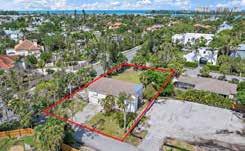
LOWEST PRICED SINGLE-FAMILY RESIDENCE
3480 ANGLIN DRIVE
$775,000
Exceptional redevelopment opportunity in Bay Isles on Siesta Key— where short-term rentals are permitted! The current home experienced water intrusion and damage during recent storms. This property is being sold for land value only. This generously sized parcel is two lots totaling 16,200 square feet (.37 acres), 90 ft of frontage and 181 feet deep. The lot spans the entire block from Anglin Dr to Flamingo Dr along Siesta Dr. No other residence backs up to it. This offering is an ideal canvas for a sizable custom home, pool, and pool-home. Whether you’re a builder looking to create a luxury island residence or an investor eyeing short-term rental potential, this location delivers.
Courtesy of Keller Williams






HIGHEST PRICED CONDO
1660 SUMMERHOUSE LANE, #102
$1,200,000
Positioned on the first floor of Summer Cove, this pristine three-bedroom condominium overlooks Sarasota’s sparkling Intracoastal waterway. The home’s unique setting includes not only a private elevator entry but a private staircase leading directly from your terrace to the scenic pool area and waterfront. Kick off your sandals in the spacious living room, with high, tray ceilings and sliding glass doors to the view, connecting you to the terrace and delightful sea breezes. The kitchen includes a breakfast bar, stainless steel appliances, granite countertops, and plenty of cabinets for storage. The primary bedroom boasts water views, access to the terrace, and features an en-suite bathroom with soaking tub, separate walkin shower, and dual sinks. Host visitors with two additional bedrooms or use one as your personal yoga/ music/art studio. A separate laundry room includes built-in cabinets and a sink. The property comes with full time on-site management, two secured assigned parking spaces with storage in the parking garage.
Courtesy of Michael Saunders



5631 MIDNIGHT PASS ROAD, #1007
$341,000
Whether you’re seeking an investment opportunity or a personal oasis, this property has it all. Turn-key furnished, open concept living, full tile flooring, abundance of natural light and plenty of living space are just the beginning of what this property offers. Enjoy access to a beautiful pool, community clubhouse, dedicated covered parking, and an option for boat slip rental at the onsite marina. This condo unit is being sold turnkey furnished. It’s ready for you or your future tenants to move in and start enjoying the Siesta Key lifestyle.
Courtesy of Keller Williams

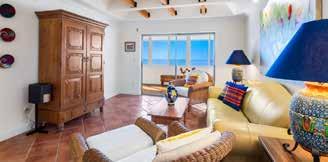




Gutwein
As the summer sun begins to soften and the vacation crowds thin, September quietly steps into the spotlight—and if you’re a buyer on Siesta Key, this might just be your golden hour.

Every month, I dive into our island’s real estate rhythms, and I can confidently say: September is one of the most underrated and opportunistic months of the year.
By September, the “tire kickers” of summer have typically faded, and those still in the market are motivated and have less competition. Whether relocating for the winter season, finalizing
1031 exchanges before year-end, or locking in a dream second home, fall buyers are focused, looking for value and often ready to move quickly. They’re scouting listings, watching neighborhoods, and making strategic moves before most buyers arrive to search for a home during high season.
For investment-minded buyers, a fall transaction can offer significant advantages:
• Close before year-end to take advantage of capital gains planning, property tax deductions, and any potential cost segregation benefits.
• Leverage tax incentives included in the Big Beautiful Bill—such as
extended bonus depreciation for qualifying property improvements, 1031 exchange flexibility, and favorable treatment for short-term rental income under certain conditions.
• Investors looking for rental income can secure a property and get it vacation-ready before the high season begins, maximizing ROI.
The clock is ticking on some of these provisions, and acting before December 31st could be the difference between a good investment and a great one. Time really is money when it comes to real estate—and September offers a smart head start.
Let’s be honest—there’s something special about Siesta Key in September. The beach is quieter, the sunsets stretch out a little longer, and the island feels like it’s taking a deep breath after summer. It’s also a time when homes look their best, with lush landscaping still vibrant from rainy season and that post-summer sparkle that can wow buyers.
Here’s what we’re seeing right now:
• Well-maintained homes with modern updates are still commanding attention.
• Condo activity has picked up slightly, as cash buyers continue to seek out low-maintenance, coastal living.
• Days on market have dropped for move-in-ready properties, signaling buyer interest.
If you are scouting for your dream home, or just exploring your options, now is the time to start the conversation. September isn’t just the bridge between summer and season—it’s your opportunity to move ahead while others are still waiting on the sidelines.
Stay sunny, Siesta!
Natalie Gutwein is a buyer’s agent and can be reached at 941-993-2660. Market & sales data source: Stellar MLS.

Immerse yourself in a community that nurtures personal growth and celebrates the joy of uncovering the creative spirit within. Please call us at 941.966.5611 to schedule a tour and learn more.
Scan the QR Code to visit our website.











